At the time, the 1990s didn’t seem like such a great decade. But with hindsight, they were a lot better than the 2020s are going so far… The motorbikes of that era included some of the most revolutionary machines ever – including the Ducati 916, Honda FireBlade, BMW R1150 GS and the Suzuki Bandit 600.
Of course, there was little in the way of electronic rider aids back then – stuff like ABS and traction control was restricted to a very few touring models from BMW and Honda’s Pan European. And strange though it might seem to modern riders, we did manage to survive without computer safety nets…
Here’s our pick of the Top Ten 600cc+ Bikes of the 1990s – with superbikes, roadsters, hyperbikes and the adventure bike that started the current trend off. All of them are available now in decent order for good money, and with some 2020-spec upgrades, especially tyres, they’ll give great service – and loads of fun.
Honda FireBlade, 1992-on
It’s hard now to credit what an impact the FireBlade had back in 1992. Looking at spec-sheets and old road tests, things like the Yamaha FZR1000 EXUP, Kawasaki ZZ-R1100 and Suzuki’s GSX-R1100 were making more power, all with good looks and decent running gear. But it was the weight difference that made the Blade such a revolution.
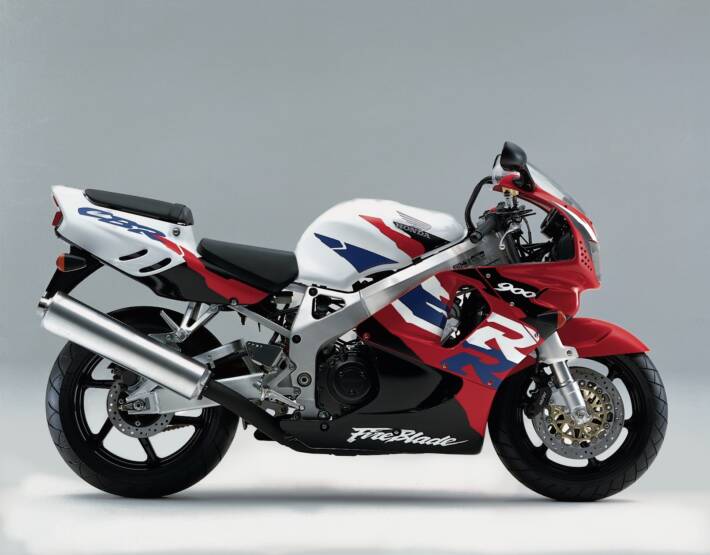
At just 185kg dry it was 25kg lighter than the FZR1000, and more than 40kg lighter than the Kawasaki and Suzuki. Even a 1992 GSX-R750 was well over 200kg, and the FireBlade was more like a 600cc machine (Honda’s CBR600F was also 185kg in 1992).
So – 600 supersports mass and size (actually a little more compact than some 600s), and almost full litrebike power was what the Blade offered, and it was an instant hit. There was nothing outlandish about the technology used – no carbon fibre or titanium, just very careful design.
Look at a Blade now and you can see gaps everywhere – behind the engine, around the swingarm, there’s lots of nothing there.
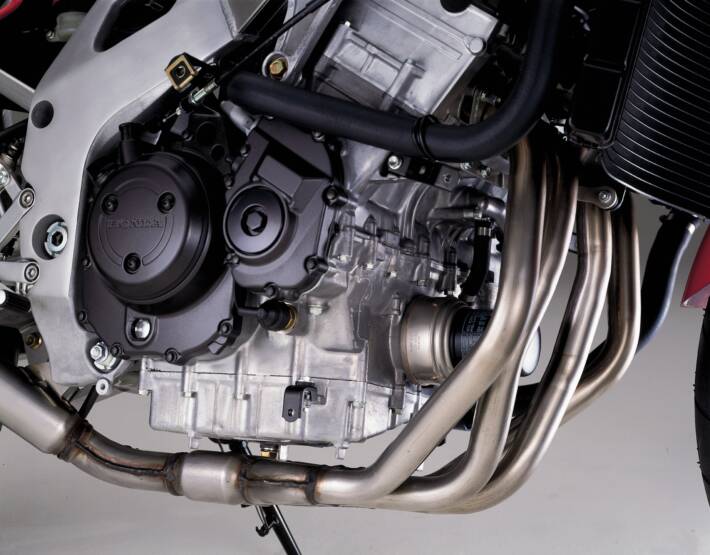
The chassis design was mostly conventional: aluminium twin-spar extruded frame, right-way-up forks, four-piston brake calipers, monoshock braced swingarm, with a full fairing, minimalist race-spec dashboard and not much else.
The only unusual thing was the 16-inch front wheel, with a unique high-profile tyre intended to give the same rolling radius as a 17-inch, but with taller sidewalls. That, and the perforations in the top fairing jokingly claimed by designer Tadao Baba to reduce weight was it for novelty.
The competition retired, stunned by the Honda’s performance, and took a few years to come anywhere close. Kawasaki’s ZX-9R tried the same trick, based on a larger-capacity ZX-7R, but was still too heavy (though more powerful).
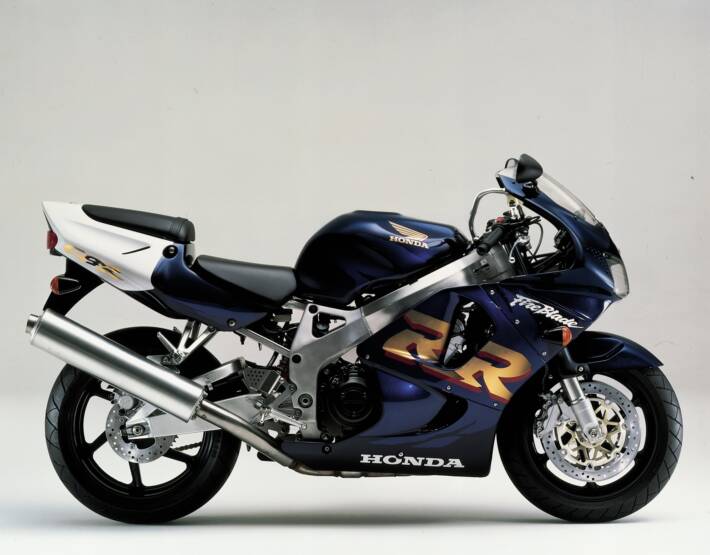
Suzuki’s GSX-R750 lost a load of weight and gained a lot of tech from 500GPs, but the smaller capacity couldn’t match the CBR900RR on the road. And Yamaha’s Thunderace was a fair stop-gap measure, with an FZR1000R foundation, less weight, more power and a better chassis.
For the next five years, the FireBlade was king of the hill, and Honda arguably rested on its laurels a bit. The other firms are no mugs, and once they got the idea, the litre superbike class turned white-hot in terms of competition. Yamaha was first to the party with its R1 in 1998, which moved the game on again, then Suzuki finally took the GSX-R750 to 1000cc and lifted the crown in 2000.
Kawasaki’s ZX-10R took another few years to appear but carved out an impressive niche for itself later on too. The original CBR900RR FireBlade had earned its place in the pantheon of greats though – and we’re always happy to see one on the road.
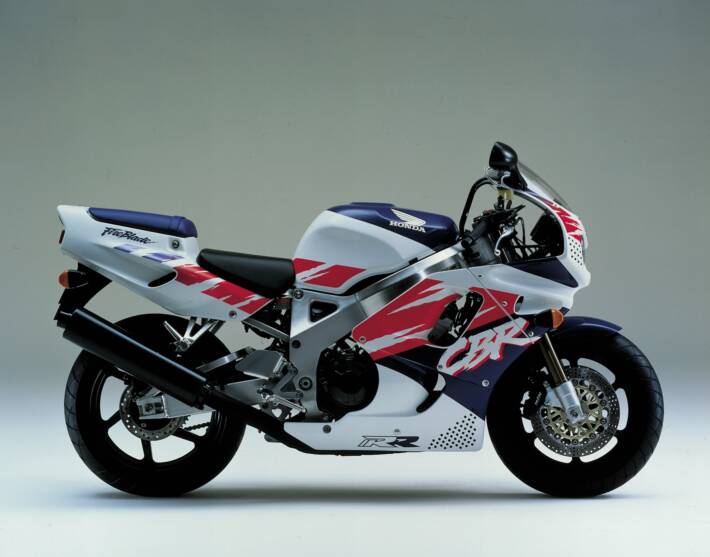
Now, the original ‘blades are creeping up in value as future classics, especially the Urban Tiger design. But a 1996 bike, with some sensible mods for modern use makes a very good sporty tourer. It’s comfy, light, reliable, well-made, and still more than fast enough…
Ducati 916, 1993-on
If you had to pinpoint one bike as the most beautiful of all time, the Ducati 916 has to be it. Conceived by legendary Italian designer Massimo Tamburini, it encompasses everything that makes Italian bikes so attractive: deep red paint, sensual lines, race-developed chassis technology, and a fiery, powerful engine. Ducati’s not known as the two-wheeled Ferrari for nothing – and the 916 is arguably its most evocative work.
But in the mid 1980s, Ducati was not a happy company. Financial woes, industrial strife, and a series of ownership changes had left it adrift, before it was taken in hand by Claudio Castiglioni and his Cagiva group in 1985.
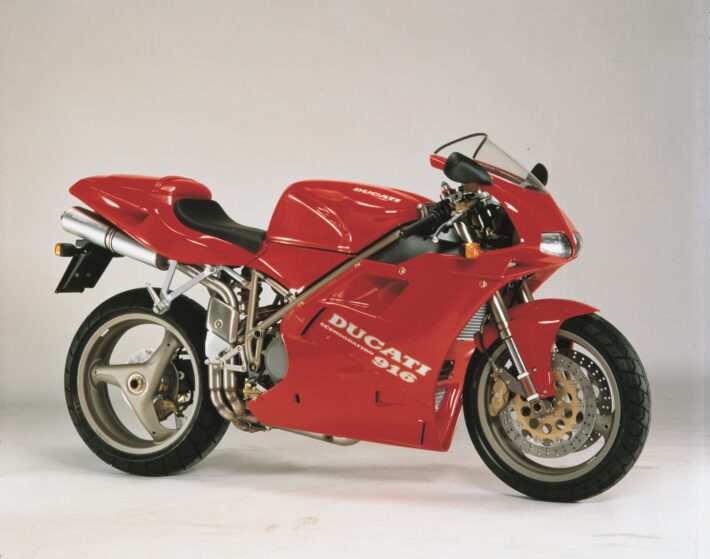
And it was Castiglioni who turned the firm round in the early 1990s with a couple of pivotal new models – the Monster 900 roadster, and the 916, based on the old 851 superbike.
The 851 was a brilliant racebike, winning the WSBK title in 1990, ‘91 and ’92 in 888 form, and showed the strength of the firm’s high-end powerplant. The desmoquattro engine was a water-cooled desmodromic four-valve V-twin developed by the firm’s engineering guru, Massimo Bordi. Compared with Ducati’s old-tech, two-valve air-cooled units, it showed the way forward in terms of superbike design and, bolted into a trademark steel tube trellis-type frame, was tough for Japanese 750cc machinery to match on track.
The 851/888 was no beauty though. Enter Tamburini, who took the fundamentals – the desmoquattro engine (now in 916cc form) in the steel tube frame, race-spec suspension and brakes, and recreated them in the most gorgeous form.
A single-sided swingarm and twin underseat silencers gave a fabulously sleek back end, echoed by the twin horizontal headlights in the front fairing. The lines of the bodywork swept back and around the rider, with subtle logos rounding off a design that just looked right from the very start…
The 916 was as good as it looked on track, winning the WSBK title five times under British racer Carl Fogarty through the 1990s. On the road, it was harder work than the Japanese competition, but rewarding once you got it right. Servicing was trickier and more expensive than more prosaic machinery, but it remained the most beautiful thing on two-wheels.
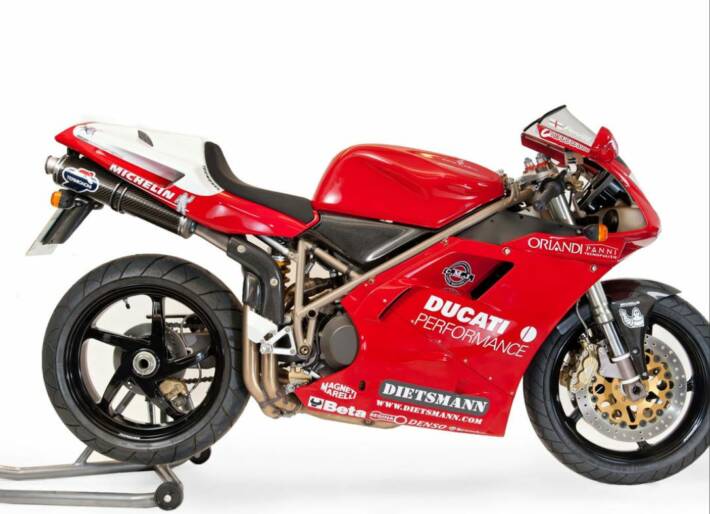
The original 916 motor grew into a 955cc race bike, then a 996 and 998 for the road. The styling stayed largely the same, but the power, sophistication, reliability and handling all improved markedly. By the time it was replaced by the 999 in late 2003, it had gained near-mythical status, and remains a legendary piece of kit even now.
SPS, SP and R versions were all released with high-end chassis and engine parts, often for WSBK homologation, and are all much rarer, and more collectable. Something like the 916 Senna, or the 916 SPS Fogarty Replica are amongst the most desirable bikes out there nowadays.
As a daily rider, an original 916 isn’t a great choice. Parts are becoming rare and pricey, servicing is still fiddly, and the original machines are gaining in value all the time. But as an occasional Sunday blaster, which spends most of its time parked up in a warm dry garage, you’ll struggle to beat it.
Kawasaki ZZ-R1100 1990-on
Kawasaki has always traded on its reputation for massively powerful engines. From the Z1 900cc superbike in 1972, through the 1981 GPz1100 and 1984 GPz900R, its motors made the most power and torque, and it’s generally held the crown for ‘fastest road bike’ down the years.
By 1989 though, its flagship machinery was looking vulnerable. The GPZ900R’s replacement, the GPZ1000RX, was not a success, and the 900R actually saw it off, staying in production after the 1000 was discontinued. The ZX-10E took the chassis design a bit further on, with an aluminium twin-spar frame, but again wasn’t a massive hit with riders.
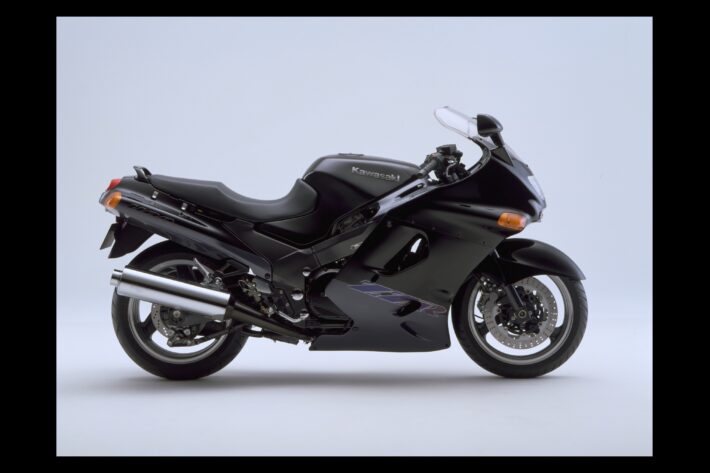
The GPZ900R was still in the firm’s lineup, but getting on a bit, as Honda’s CBR1000F, Suzuki’s GSX-R1100 and Yamaha’s FZR1000R all appeared with more power and better chassis technology.
The ZZ-R1100 was a master stroke when it appeared in 1990. Rather than trying to go down the sporty route of the ZX-10E, it went full-in on high-speed comfy continent crushing, with a sport-touring chassis, relaxed-but-dynamic riding position and super-strong engine. Still with its foundations in the GPZ900R, the 1100 motor took capacity up to 1,052cc, with a claimed 145bhp output, and a ram-air intake in the top fairing.
This was claimed to boost power at high speeds, with the intake charge being slightly pressurised by the airflow at the front of the bike. All-up mass was high at 228kg dry, but not outrageous, the aluminium frame helping reduce weight. Suspension was plush and comfy rather than track-sharp, and the brakes did as good a job as anything at the time, considering the speed and weights involved.
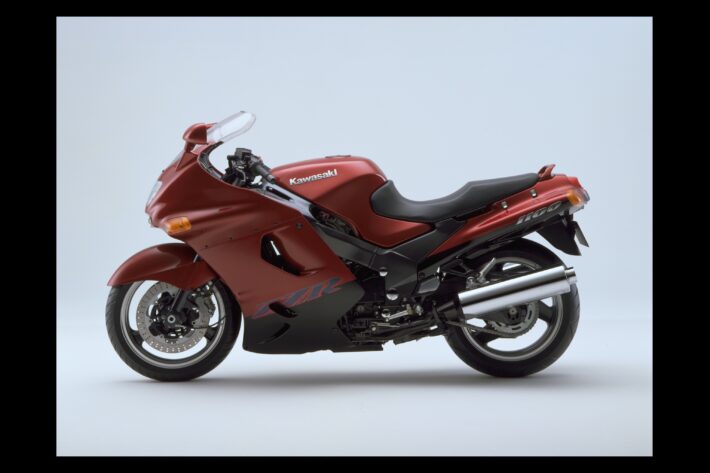
Nowadays, a ZZ-R1100 is still a very fast motorbike. Early models were restricted to 125bhp with carb tops that stopped the slides opening fully. Most will have been derestricted by now, but if not it’s a simple enough job to get the 145bhp back. Tyres, pads and chains all take a pounding, so keep on top of these consumables.
The internal chain that drives the alternator can lose tension, with the tensioner blade hitting the outside of the clutch pressure plate. That aside, a stock engine will last for tens of thousands of miles with nothing more than factory-schedule servicing.
Yamaha R1, 1998-on
Yamaha’s answer to the Honda FireBlade, and what an answer it was. An all-new engine and chassis took Yamaha to the next level in terms of performance and handling, with a host of clever design moves. First, the engine used a ‘stacked’ layout, with the gearbox raised up behind the cylinders, giving a shorter engine front-to-back.
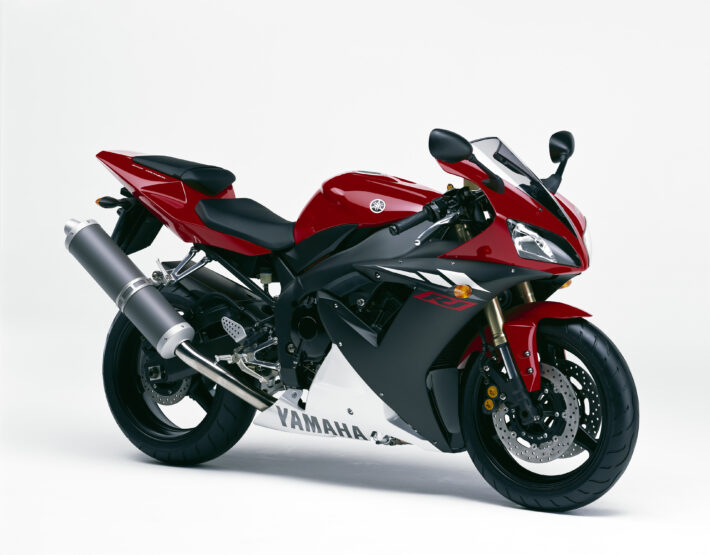
That allowed a longer swingarm alongside a short wheelbase, boosting stability. The adjustable USD front forks also had extra-long travel, so when you accelerated and the weight came off them, the front tyre stayed in contact with the ground for a little longer, boosting stability on the gas.
The stark figures were impressive – just 177kg dry, with 149bhp. The engine was a full 999cc, larger than the Honda, and used Yamaha’s five-valve cylinder head design for more power and efficiency, as well as the trademark EXUP exhaust valve.
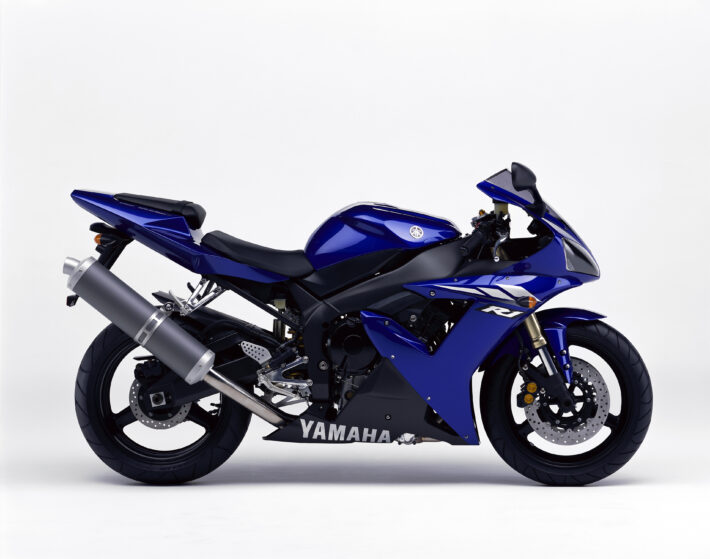
The frame was a Deltabox II design, with aluminium twin spars and braced swingarm, and the firm stuck with the same excellent Sumitomo ‘blue spot’ brake calipers used on the previous Thunderace superbike.
On the road, the superlative power-to-weight figures, together with the excellent handling made it a monster of a thing to ride. The standard Metzeler tyres were easily improved upon with stickier competitors, and once that was done, you had a genuine track contender as well.
Even with the cunning chassis design though, it could still shake its head when hard on the gas. Of course there was nothing in the way of electronic rider aids: this is a bike from the golden age, when the only safety net was your right wrist…
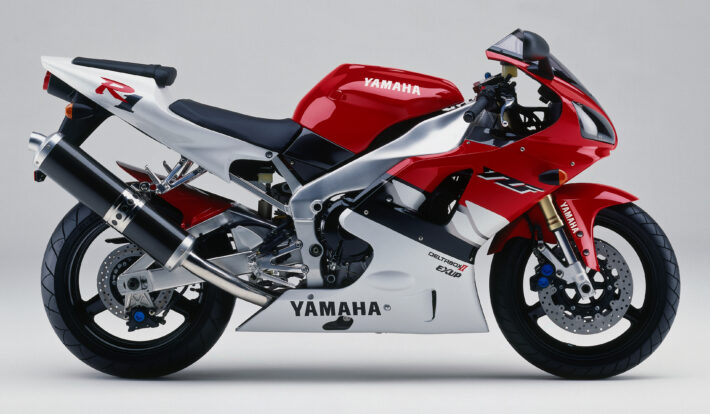
Later models refined the design until you got the space-age superbike weapon we have today. But the original is guaranteed a place in the two-wheeled hall of fame forever. A low-mileage, standard, good-condition 1998 bike is a rare thing nowadays, and climbing in value.
Red and white is the most popular, but we have a real soft spot for the blue one as well to be fair…
Yamaha Fazer 600, 1998-on
The Fazer 600 might have been an entry into a fairly mundane class back in 1998, but it was such a good bike that we reckon it’s earned its spot here. The 600 roadster class was revitalised by the Suzuki Bandit 600, and enhanced by the Honda Hornet, but the Fazer lifted it to another level. On paper, it was nothing special – a steel tube cradle frame with a revised 95bhp version of the YZF600 Thundercat engine, smaller carbs, softer cams and a little half-fairing, weighing 189kg dry.
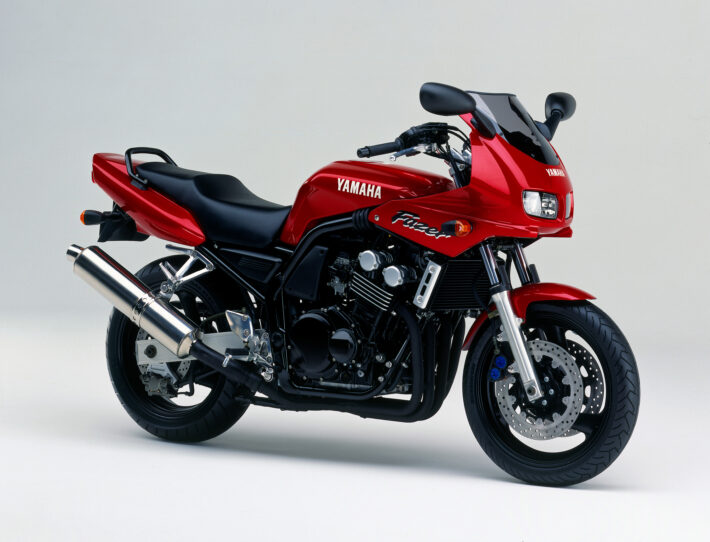
But Yamaha had sneaked in a couple of aces – firstly, it kept the Thundercat brakes, which were class-leading at the time. The fairing gave an extra dimension of practicality missing from ‘proper’ naked competition like the original Hornet 600. And the retuned engine was a corker for the road, with loads of low-down urge, pleasing top-end, and even had good fuel economy.
There were two bad points: a mild steel exhaust system that rotted easily, and hilariously bad headlights. Both of these were rectified on later versions, with a fairing similar to the Fazer 1000 that had much better lighting, plus a stainless exhaust that appeared in the early 2000s. The last carburetted Fazer 600 in 2002 was an superbly well-developed machine, with a huge 22 litre fuel tank and the better ‘fox-eye’ headlight design.
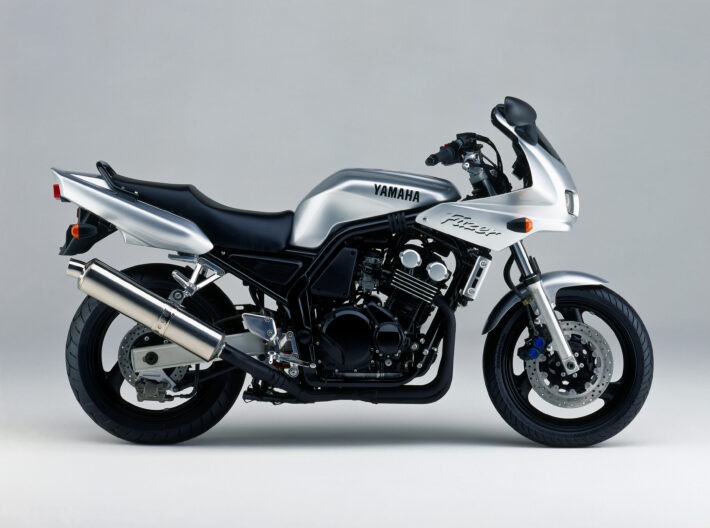
The replacement fuel-injected FZ-6 Fazer was a decent effort, but the R6-derived engine was much revvier, and while the aluminium frame was lighter, the cheaper sliding-caliper brakes let it down.
If Yamaha released the 1998 Fazer in 2021, with the obvious ABS and fuel injection requirements, it would still be a massive hit we reckon. In the meantime, there are hundreds of used examples available, from very little cash, and lots of cheap used spares too.
Big problems nowadays are clogged and worn-out carburettors, crash-damaged fairing and tanks, and faulty ignition leads and coils. All are easily sorted with a little bit of effort though.
Suzuki Bandit 600, 1995-on
Considering its mundane origins, the Bandit 600 had an incredible impact on the bike world. Launched as a budget ‘parts-bin’ model, it came with an engine out of the old GSX600F sport-tourer, in a basic steel tube frame with single headlight, no fairing, and standard running gear all round. The oil-cooled engine made just 77bhp (claimed), but was reliable and decent on fuel.
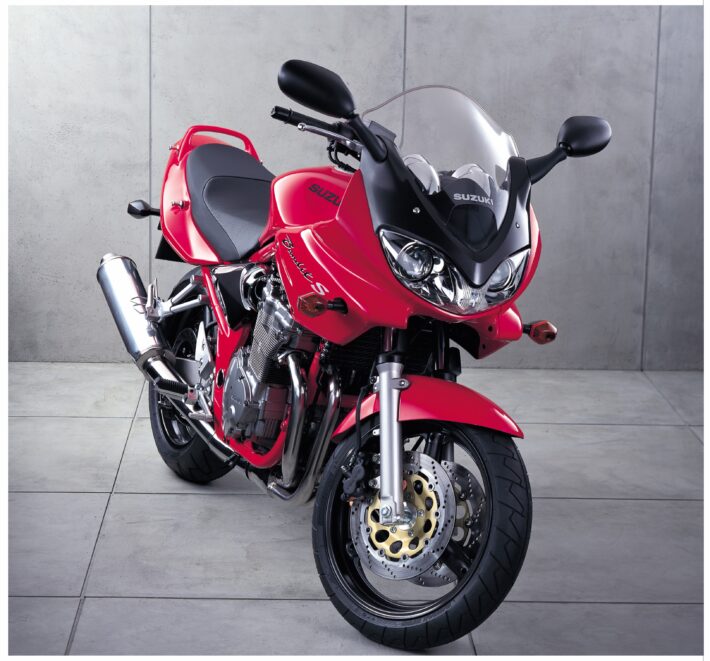
All-up weight was claimed at 196kg dry, again, nothing amazing, but reasonable for the time. The rear suspension got a proper monoshock linkage, with adjustable shock, while the unadjustable front forks wore basic sliding-caliper twin-piston brakes.
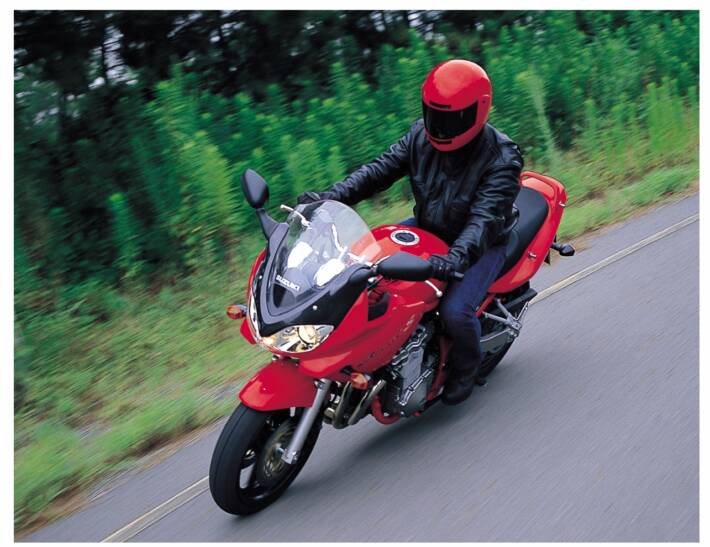
On the road, the Bandit 600 was good fun – much more nimble than old-school dinosaur inline-four machines from the 1980s, and fast enough for most. The best part was probably the price though – just £3,999 when new, which was hard to argue with.
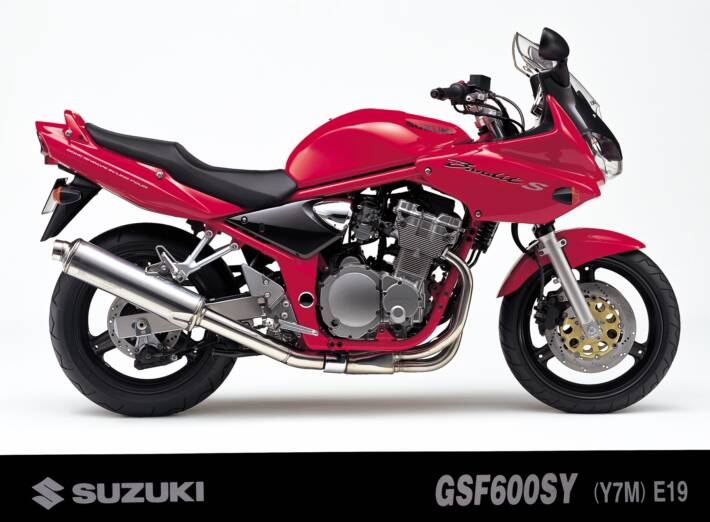
For 1996, Suzuki offered a half-faired S variant, which added weather and wind protection and extended the remit to light touring and longer-range commuting. Updates in 2000 brought a different frame design and a host of other updates, although by then the Yamaha Fazer and Honda Hornet offered much sharper options in the class. But as the bike which arguably started it all off, the Bandit 600 is well worthy of our respect, even 26 years later…
Kawasaki ZX-7R, 1996-on
There’s something that is just right about the looks of the ZX-7R. Even now, 25 years later, the aggressive front fairing lines, with gaping ram-air intakes, hunched over beefy front forks, is totally spot-on. The 750cc four-cylinder class was white-hot at the time thanks to the world and British superbike championship rules, and all the Japanese firms built superb race-replicas.
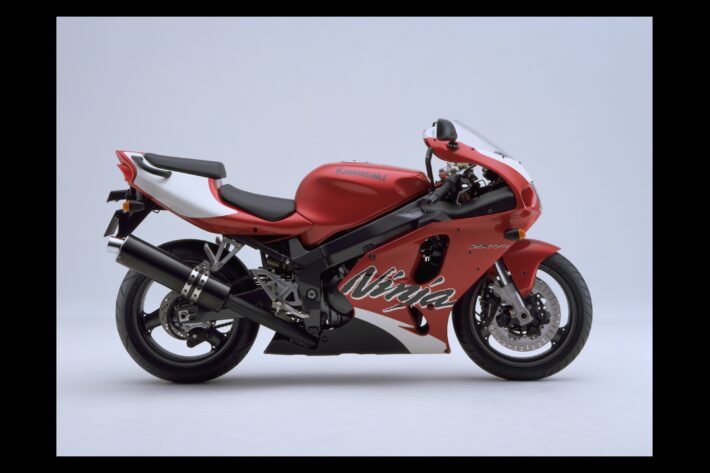
Some, like the Honda RC30 and Yamaha FZR750R OW01 were limited-edition megabucks homologation specials, with no basic road version on offer. But Suzuki and Kawasaki both produced ‘standard’ roadbike versions as well as expensive, super-rare SP or RR homologation machines.
The ZX-7R took its cues from the previous model, the similarly-styled ZXR750, but added a new shorter-stroke 748cc engine and redesigned chassis and bodywork.
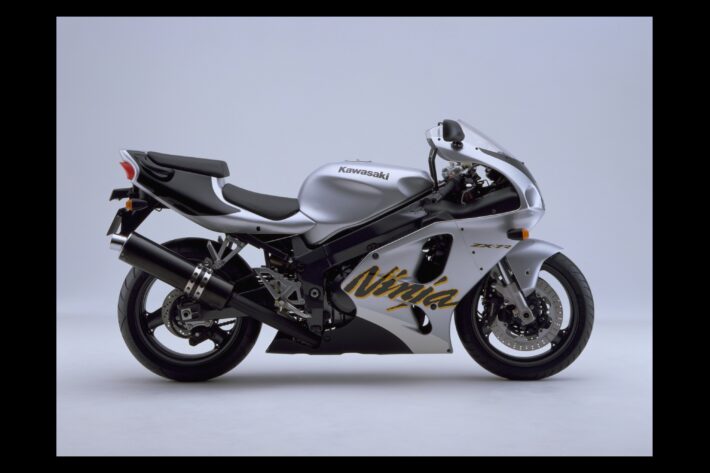
Looks came from the ZX7-R endurance racers that Kawasaki had campaigned from the late 1980s, including the twin headlamps and air intakes – though it lost the ‘Hoover pipe’ cooling ducts which made the ZXR look so purposeful.
The ZX-7RR race variant had a single-seat unit, close-ratio gearbox, larger flat-slide carbs, and a host of other detail mods. It was only for race teams really, so is extremely rare, and was actually slower on the road in stock form.
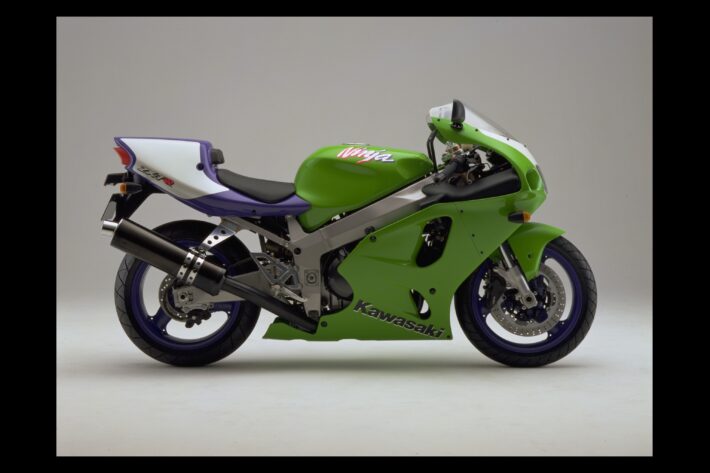
Kawasaki had taken the WSBK title with the earlier ZXR750R, ridden by American racer Scott Russell, but the ZX-7R didn’t enjoy the same success. On the road, it was a bit heavy compared with the competition, and the race-rep riding position made it a bit of a chore on longer road rides. A quarter of a century on, though, you still can’t argue with those looks…
Suzuki GSX-R750 SRAD 1996-on
The original 1985 GSX-R750 was a genuine milestone: the first ‘proper’ race replica machine, and one which transformed track-ready supersports machine design. Its superlight weight, good power and fine handling revolutionised racing, and helped form Superbike racing series around the world.
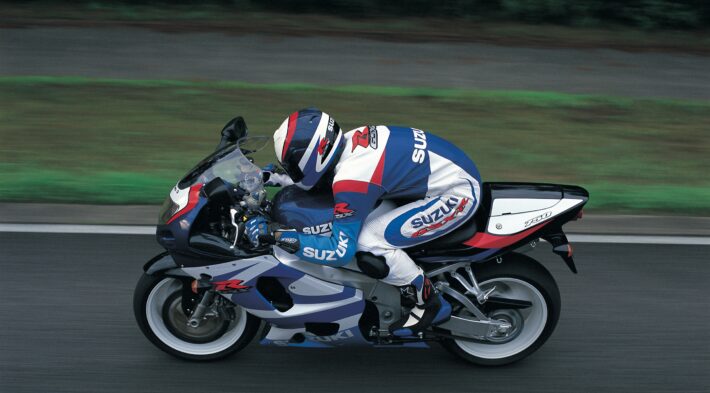
Over the next decade it would, in truth, lose its way a little though, gradually adding weight and losing its edge. Water-cooling replaced oil-cooling in the engine and beefy USD forks appeared up front, while the cradle-type frame arguably held back the chassis development.
For 1996 though, Suzuki went large on a replacement. It took the chassis basics off its 1993 500GP title-winning bike, the RGV500 Gamma, and transferred them onto the GSX-R750. Of course the engineers couldn’t match the mass of the trick two-stroke motor, though they did amazingly well, shaving the overall mass down to 179kg dry.
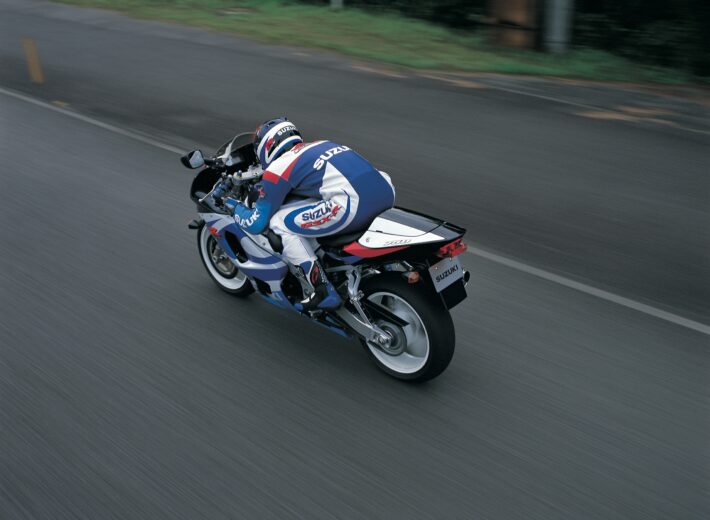
The wheelbase and steering geometry matched the RGV though, and the power was also impressive at 126bhp. On paper, it was enough to match the Honda FireBlade in terms of power/weight ratio – but the Honda’s larger engine gave more low-down torque, letting it pip the revvier 750 on the road.
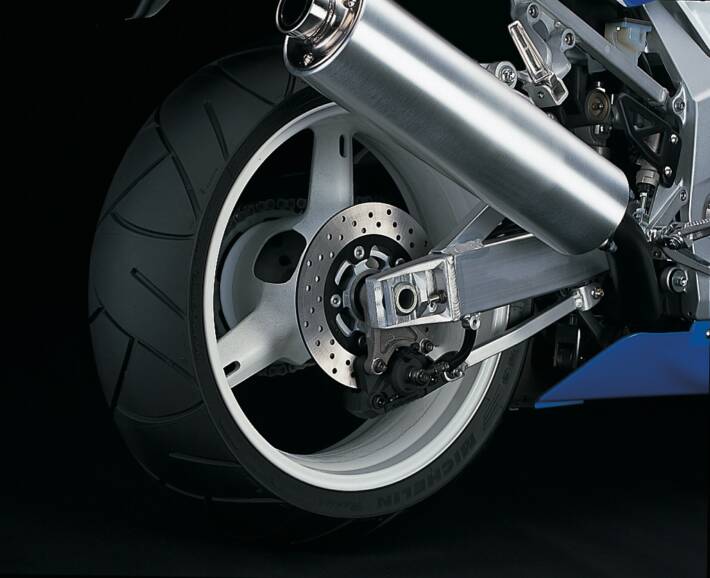
Updates in 1998 added fuel injection, which filled in some of the flat-spots in the GSX-R750’s power curve, and by 2000, an all-new model brought power up to 140bhp and a fabulously refined chassis. By then though, Suzuki was already working on the GSX-R1000 K1 which would replace the 750 completely for the 21st century.
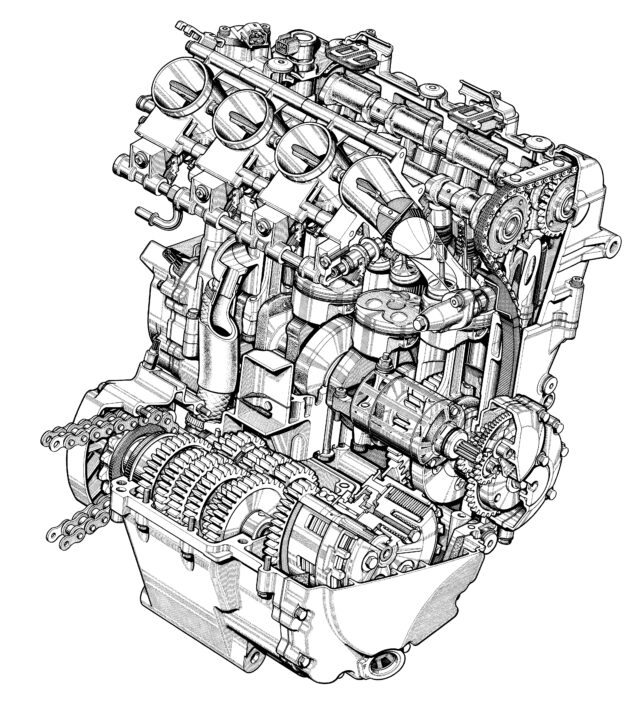
Nowadays, the GSX-R750 SRAD is the classic connoisseurs’ choice: a proper race-replica, with all the heritage to match its performance. No rider aids, no ABS, just a pure, simple riding experience. Update the tyres, get a suspension revamp, and revel in the 500GP-esque handling…
Honda CBR600F 1997-on
In the early 1990s, the Honda CBR600 was as close to a ‘universal’ motorbike as you could get. People raced them at national level, they were great commuters, you could tour across Europe two-up easily on one, and they were amongst the best-made and most reliable machines out there. Honda sold them in the tens of thousands, and with the relentless upgrade cycles of Japanese manufacturers in the 1990s, further improvements came every two years.
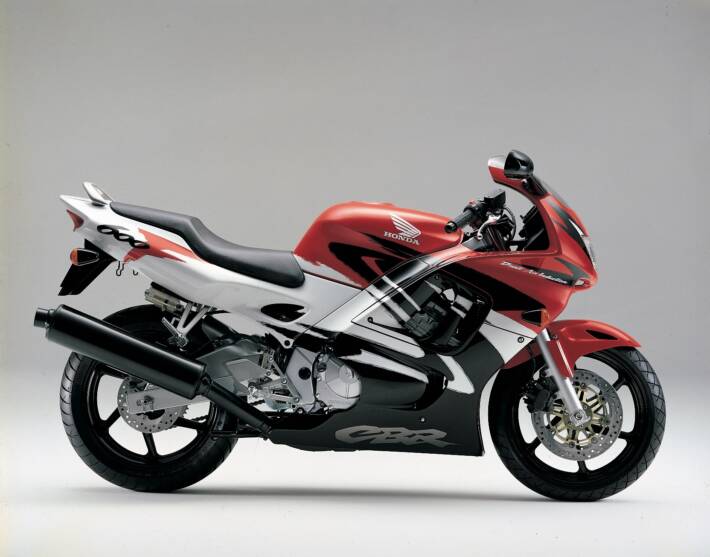
By 1997, the basic design had been refined to a fine pitch. Unlike the competition, Honda had stuck with a steel frame, hidden behind all-enclosing full bodywork, holding an inline-four 16v DOHC water-cooled engine making around 100bhp. The suspension and brakes were all fairly standard fare, with no space-age technology or posh race-spec components – just solid, dependable, high-quality parts, as part of a well-designed unit.
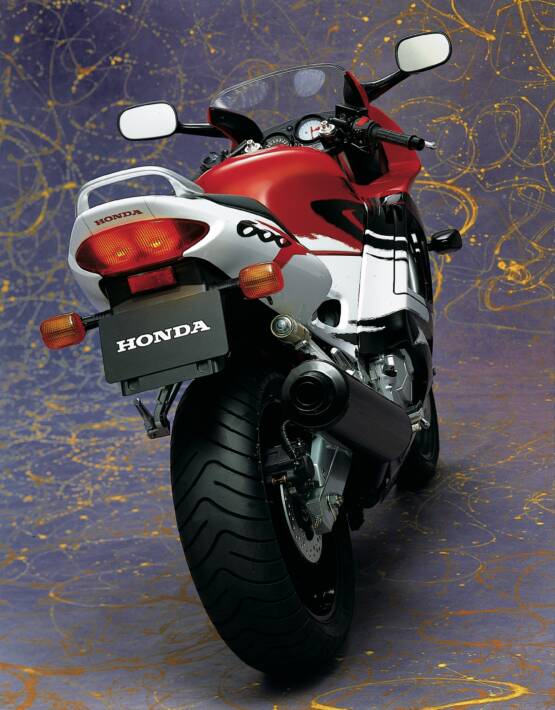
It was no lightweight at 186kg dry, and like many Hondas down the years, you’d have written it off if you only read the spec sheet. But on the road, it was a fabulous bike, with smooth, progressive power that was easy to access, and sharp yet stable handling.
It was a little boring, sure, and livelier options like the faster Kawasaki ZX-6R or sharper Yamaha FZR600R would often grab the attention. But it was the CBR that won out on the showroom floor, and on the race track.
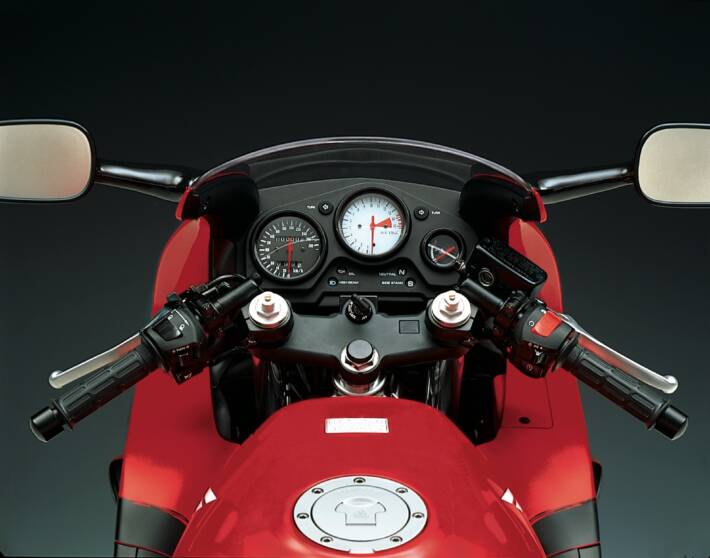
The 1999 upgrade saw an aluminium frame at last, and the final versions of the old CBR600F up until 2003 were lovely bikes to ride. The sportier CBR600RR took over in 2003 though, with a much more focussed track design.
BMW R1150GS 1999-on
If you could travel back in time to the late 1990s, there would be quite a few things you could shock your 25-year-younger self with. But telling you that the BMW R1100 GS, in 1200 form, would be the best selling bike in the UK for years and years would probably have you burned as a witch.
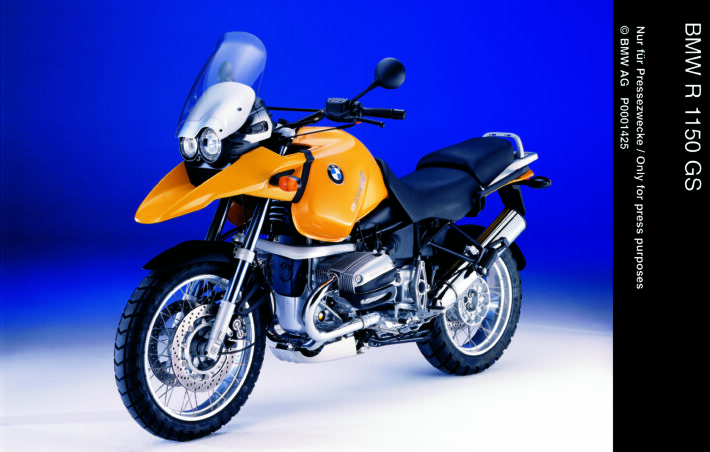
As we know now though, it’s all true. Adventure touring bikes have taken over from 600cc supersports bikes as the most popular machines in the sales charts, and a big part of that has to be down to the BMW GS in its various big-bore Boxer forms.
Okay, there were other bikes like this around at the time, but none of them seemed to be really serious about it. Honda Varadero? It had a Firestorm engine which drank fuel like a Space Shuttle Main Engine. The Yamaha Super Ténéré 750? It was as niche and high-maintenance as an Arabian race horse. And both it and the Honda Africa Twin had a rubbish £/bhp ratio.
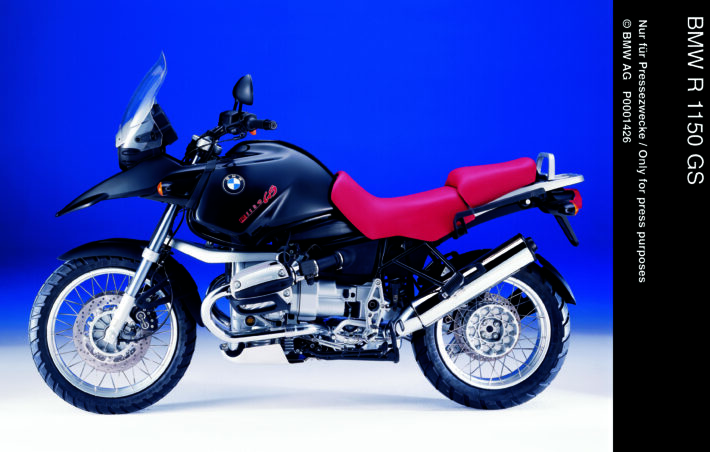
BMW was all-in with the GS though. Its roots were in the R80 G/S which was an actual racebike campaigned in the Paris-Dakar Rally (back when it actually happened between Paris and Dakar) with some success. That came in spite of its ludicrous layout: a huge flat Boxer twin with shaft final drive rather than a skinny, light, single-cylinder dirt bike.
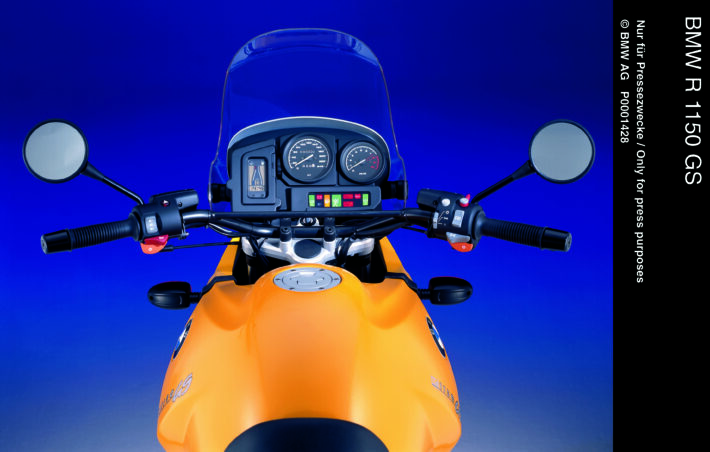
However we got there, by the mid-1990s, the R1100 GS was an under-rated hit as a road bike. The Telelever and Paralever suspension looked like nonsense but was a good recipe for soft, long-travel suspension on a heavy road bike. The engine was by now fairly capable, making about 80bhp from its oil-cooled four-valve fuel-injected 1,084cc flat twin, and BMW offered a solid range of accessories including luggage and touring gizmos.
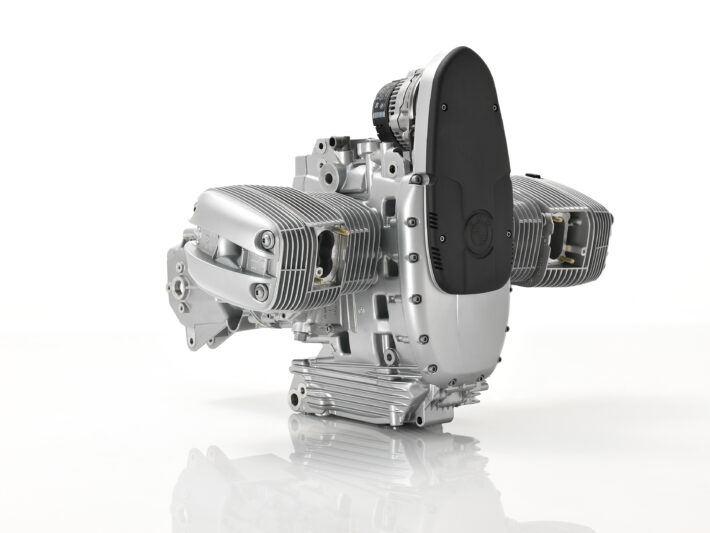
The 1999 1150 GS moved things on again though, with more power and torque from an 1,130cc motor, six-speed gearbox and more refined chassis and equipment. You could ride it fairly hard offroad – if you had the skills – but as more people were beginning to find out, it made an excellent comfy, quick, practical way to get across the country.
Even now, the 1150 has its fans, and if you can find a low-mileage example with ABS and a load of BMW bells and whistles, you’ll have a solid classic adventure workhorse.
One comment on “Top Ten 600cc+ Bikes of the 1990s”
The first fuel injected 600 Fazers supposedly had the r6 motor and were very revvy.
I had 2 of the first ones which were great, centre stand plus useful space under the seat as well as all the other good stuff you mention.
I then had a fuel injected s2 from 2008 and that was not revvy like an r6.
You could ride it down to 25mph in top and not need to change down.
Did 30000 miles on it with brilliant servicing from Phoenix motorcycles in Trowbridge and wish I still had it.
Maybe a bit plasticky but just a great bike, again with a centre stand.